It began with silence — the kind that precedes a revolution. Inside the prestigious United Nations Conference Hall on October 24, 2025, two teenagers walked to the podium, faces illuminated by the soft glow of cameras and anticipation. Their names, Ruihang Zhang of California and Eirene Hope Liu of New York, were unfamiliar to most of the attendees. But within minutes, their words would disrupt decades of environmental diplomacy with a simple, searing challenge: if the planet’s future is truly at stake, why aren’t young people the ones writing the blueprint?
The Moment That Shook The Room
Under the banner of the U.S. Youth Leaders Organization (YLDO), and backed by the World Harmony Foundation, the duo unveiled the Waste-Free Planet Action Initiative during the UN’s 80th Anniversary Summit. It was no mere statement of hope. It was a structurally defined, four-pillar plan calling for radical reductions in waste, a redefinition of “green living,” and the creation of compostable materials to replace plastic worldwide. “Change starts with young people, and action starts now,” Zhang and Liu told delegates, their voices unwavering.
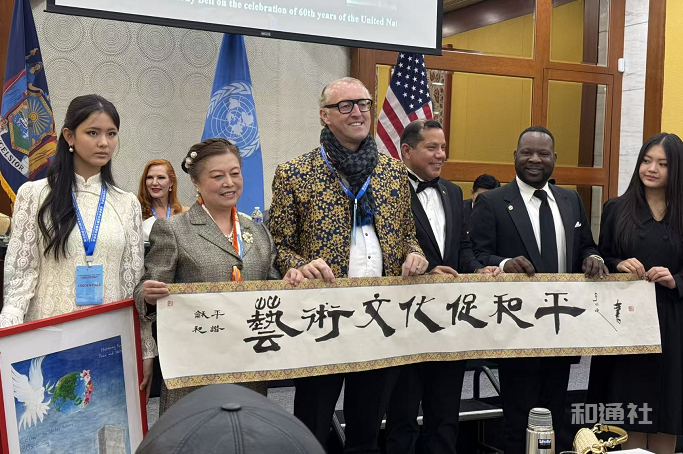
In that very moment, she and Zhang synthesized what many diplomats and scientists have struggled to articulate — a tangible global response to the accelerating environmental crisis. For the World Harmony Foundation (WHF), a New York-based nonprofit long known for bridging international youth leadership and environmental stewardship, it was more than a shared victory. It was the public manifestation of a mission they have quietly pursued for decades: empowering the next generation to move environmentalism from rhetoric to reality.
A Foundation Rooted In Global Responsibility
World Harmony Foundation’s trajectory is atypical within the crowded field of environmental advocacy. Founded in the early 2000s by international peace advocates, WHF operates at the intersection of youth engagement, sustainability innovation, and diplomatic collaboration. Rather than acting as a traditional nonprofit confined to awareness campaigns, it positions itself as a cultural intermediary — a conduit through which governments, UN agencies, and young innovators can jointly develop and implement feasible environmental solutions.
At the organization’s headquarters in New York, the ethos is straightforward. “Our mission,” explained a WHF spokesperson, “is not only to protect the planet but to harmonize humanity’s pursuit of advancement with nature’s limits. We believe that environmental security is the foundation of world peace.” That belief has guided WHF through partnerships with the United Nations Environment Programme (UNEP), the Global Water Alliance, and many other youth-led networks across Asia, Europe, and the Americas.
What differentiates WHF is its long-term strategy. While many organizations focus on short-term campaigns or policy lobbying, WHF cultivates cross-generational dialogue through education and art. Its ongoing initiatives include global youth summits, sustainability art exhibitions, and diplomatic forums designed to educate and empower students at a formative stage. The foundation’s leadership sees these cultural connections as essential to the systemic transformation required for a truly waste-free world.
Their strategic vision gained renewed momentum with Zhang and Liu’s UN presentation, which WHF supported both ideologically and logistically. “We recognized in their proposal something rare,” the spokesperson continued. “It wasn’t just activism — it was an actionable roadmap rooted in science, youth ingenuity, and civic accountability.”
The Rise of The “Waste-Free Planet” Blueprint
The Waste-Free Planet Action Initiative introduced by Zhang and Liu greatly represents what industry observers are calling a shift from environmental awareness to operational reform. Its four significant pillars — reduce and refuse, strengthen recycling, innovate and recreate, and global collaboration — translate the moral imperative of sustainability into something more tangible and clearer.
The initiative’s centerpiece, the call for organically biodegradable water bottles made from agricultural waste, directly addresses one of the most pressing challenges in the industry: single-use plastics (SUPs). According to WHF, global plastic production currently exceeds 400 million tons annually, with microplastics infiltrating every major ecosystem and even the human food chain. The proposed innovation aims to dissolve this dependency at its source.
“This generation doesn’t see environmentalism as optional,” Zhang affirmed when speaking about the project’s goals. “We view it as an ethical baseline for civilization’s survival.” His words reflect a generational urgency that environmental organizations, including WHF, are increasingly acknowledging as critical to progress.
For the broader sustainability sector, WHF’s involvement is strategically symbolic. It underscores the nonprofit’s unique role as both facilitator and amplifier, linking high-level global agendas with grassroots youth ingenuity. Within weeks of the UN summit, the foundation reported an upsurge in inquiries from partner institutions in Europe, Asia, and the Middle East seeking to replicate aspects of the initiative. In the often sluggish machinery of international environmental policy, such response rates are rare and telling.
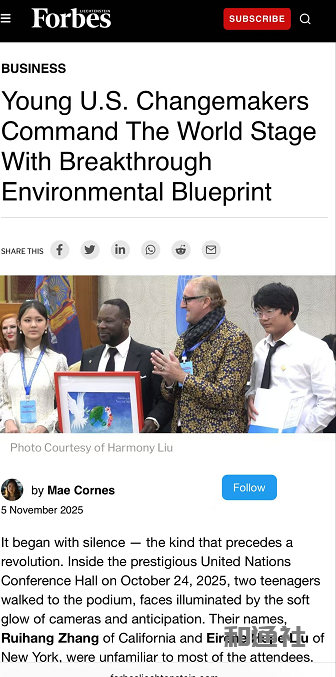
From Symbol To System: The Industry’s Inflection Point
The growing resonance of WHF’s youth-backed model comes at a critical juncture. Environmental organizations worldwide face donor fatigue, fragmented policy priorities, and mounting skepticism about the real-world impact of climate commitments. Yet, WHF’s ability to transform symbolic expressions, such as art, culture, and youth activism, into diplomatic outcomes offers a compelling counter-narrative.
At the close of the UN event, Zhang and Liu presented a hand-painted work — a vibrant depiction of Earth’s regeneration — as a commemorative gift to the United Nations. For WHF, this was not just a ceremony, but a demonstration of its methodology: bridging creative expression with global governance. In the foundation’s view, art carries emotional weight that policy language cannot, inspiring empathy where data alone cannot persuade.
“The environmental challenge is not a technical problem alone; it’s a cultural one,” explained a representative from WHF’s international committee. “Technology can solve pollution. But only collective imagination can build harmony.” It is this philosophy, marrying the empirical with the emotional, that defines the organization’s distinct place in the environmental movement.
As calls for accountability in climate action intensify, WHF has positioned itself not on the periphery of policy but at its moral center. Its focus on empowering young people through global stages, such as the UN’s, signals a widening paradigm: where youth are not the audience of change, but its architects.
A Future In Synchrony
In the weeks following the UN summit, the Waste-Free Planet Action Initiative has attracted growing global interest, bolstered by endorsements from environmental agencies and philanthropic leaders. Yet, WHF’s leadership remains measured. “This is just the first wave,” a foundation representative reflected. “What matters now is implementation, building the systems to make our waste-free vision irreversible.”
For the World Harmony Foundation, the path ahead is both pragmatic and philosophical. Their strategy is not only about reducing waste, but also about redefining harmony between economies and ecosystems, humans and the natural world, and innovation and compassion. From their vantage point, the most profound environmental transformation will come not through mandates, but through mutual understanding.As the foundation’s motto continues to resonate across diplomatic circles, one statement succinctly captures their ethos: “Sustainability is not an act of compliance; it’s an act of humanity.
学生张瑞航Ruihang Zhang、刘昕媛Eirene Hope Liu在联合国80周年庆典发起“全球废塑”行动并获奖、被福布斯名人杂志表彰
转载福布斯报道: 美国青少年以突破性环保蓝图登上世界舞台
摄影:刘昕格(Harmony Liu)|青少年领袖发展组织(YLDO)创会主席
福布斯记者:梅·科恩斯(Mae Cornes)
日期:2025年11月5日
一切始于沉默——那种革命前的沉默
2025年10月24日,联合国80周年诞辰。在这座庄严的联合国会堂中,两位青少年登上讲台,他们的面庞在闪光灯与期待的目光中熠熠生辉。来自加州的张瑞航(Ruihang Zhang)与来自纽约的刘昕媛(Eirene Hope Liu),对于大多数与会者来说仍然陌生。然而,仅几分钟后,他们的发言以一句振聋发聩的提问,打破了数十年来的环保外交格局。球的未来真的处于危机之中,为什么撰写蓝图的人不是年轻一代?”
震撼全场的时刻
在美国青年领袖发展组织(YLDO)的旗帜下,并在世界和谐基金会(World Harmony Foundation,简称 WHF)的支持下,两位青年在联合国80周年峰会上推出了“无废星球行动倡议”(Waste-Free Planet Action Initiative)。
这不仅是一份充满希望的宣言,更是一套以“四大支柱”为核心、结构清晰的行动计划。倡议旨在彻底减少废弃物、重新定义“绿色生活”,并以可降解材料取代全球塑料使用。“变革始于青年,行动从现在开始。”张瑞航与刘昕媛在会上坚定地说道。
他们的发言凝聚了许多外交官与科学家长期难以言明的愿景——为日益加剧的环境危机提供切实可行的全球回应。对长期致力于青年领导力与环保治理融合的世界和谐基金会而言,这不仅是一场公开的胜利,更是其数十年来使命的体现:让下一代将环保主义从口号化为现实。
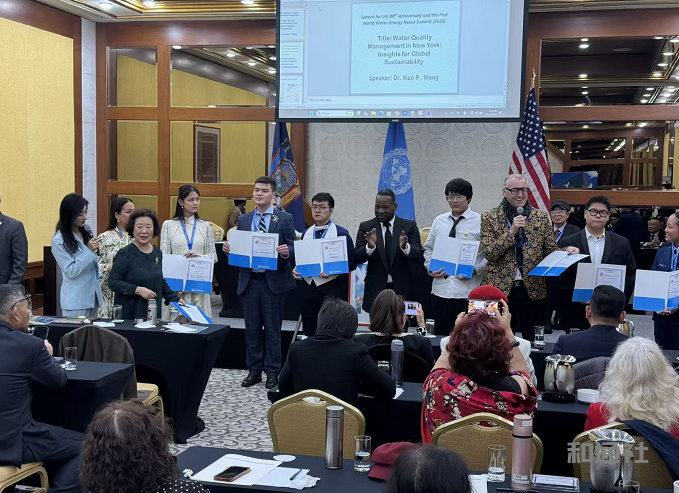
植根于全球责任的基金会
在众多环保组织中,世界和谐基金会(WHF)的发展路径独树一帜。成立于21世纪初,由多位国际和平倡导者共同创立,基金会的核心在于青年参与、可持续创新与外交合作的交汇。
它不仅是传统的公益机构,更是一个文化桥梁——让政府、联合国机构与青少年创新者共同开发并落实环境解决方案。
WHF总部位于纽约,秉持着明确的信念。一位发言人表示:命不仅是保护地球,”
这一信念促使WHF与联合国环境规划署(UNEP)、全球水联盟(Global Water Alliance)及多个国际青少年网络建立长期合作关系。
不同于许多专注短期宣传或政策游说的组织,WHF通过教育与艺术促进跨世代对话。其长期项目包括全球青少年峰会、可持续艺术展览及外交论坛,旨在在青少年成长阶段植入责任感与创造力。基金会领导层认为,这种文化纽带是实现“无废世界”体系转型的关键。
“无废星球”蓝图的崛起
由两位青少年领袖发起的“无废星球行动倡议”标志着从环保意识向系统改革的关键转折。其“四大支柱”——减少与拒绝、强化回收、创新再造与全球协作——将可持续发展的理念转化为可操作的行动框架。
倡议核心在于推广以农业废料制成的生物可降解水瓶,以取代一次性塑料制品(SUPs)。据WHF统计,全球塑料年产量已超4亿吨,微塑料已渗透所有主要生态系统,甚至进入人类食物链。该方案旨在从源头削减塑料依赖。人不认为题,”张瑞航表示,“我们视其为文明延续的伦理底线。”
他的言语体现了当代青年的紧迫感——这一点正被包括WHF在内的国际组织广泛认同。
峰会结束后,WHF收到了来自欧洲、亚洲及中东多家机构的合作邀请,希望复制该倡议的部分方案。在缓慢的国际政策体系中,这样的反响极为罕见。
从象征到体系:行业转折点
WHF以青少年为核心的模式在此关键时刻展现出更强共鸣。当前全球环保机构普遍面临捐赠疲劳、政策分散与公众质疑,而WHF通过艺术、文化与青年行动实现外交成果,为环保治理提供了新的路径。
在联合国80周年活动闭幕式上,张瑞航(Ruihang Zhang)与刘昕媛(Eirene Hope Liu )向大会赠送了由张瑞航构思、刘昕格绘制的《地球重生》画作,作为献给联合国80周年庆典礼物。对WHF而言,这不仅是一场仪式,更是一种方法论的体现:以创意艺术连接全球治理。
WHF国际委员会一位代表指出:境挑战不仅是技术问题,更是文化问题。这种理性与情感结合的理念,正定义着WHF在环保运动中的独特地位。
共振的未来
在联合国80周年庆典峰会结束后的数周内,“无废星球行动倡议”持续获得国际关注,并赢得多家环保机构及慈善组织的支持。然而,WHF的领导层依然保持谨慎乐观。“这只是第一波浪潮,”基金会的一位代表表示,“接下来更重要的是执行——建立起使‘无废愿景’不可逆转的系统。”
对世界和谐基金会(WHF)而言,前路既务实又富哲思。他们的战略不仅是减少废弃物,更在于重新定义经济与生态、人类与自然、创新与同理心之间的平衡。从他们的角度来看,最深远的环境转型将不是命令驱动的,而是由相互理解所推动的。

正如WHF基金会的格言在各国外交圈广为流传,那句话精准地概括了他们的信念:“可持续发展不是一种服从的行为,而是一种人性的体现。”
张瑞航(Ruihang Zhang):来自加州洛杉矶John A. Rowland罗兰岗高中11年级优秀学生,现任青少年领袖发展组织(YLDO)秘书长。特别热爱数学、科技、多次获得数学比赛奖项。在校外积极参与联合国各项青少年公益活动,在学校表现同样优异,持续获得校长最高荣誉奖。
刘昕媛(Eirene Hope Liu):纽约长岛Jericho高中9年级优秀学生,热爱艺术画画、时尚设计与联合国少年领导力公益活动, 师从纽约水影艺术画院与Sally艺术学校,有幸获得李同欣大师与翁忠老师的指导,在电影表演与舞蹈艺术方面获得知名导演汪子奇老师、与舞蹈家晶晶老师的指导,曾经获得少年演员电影选拔赛的最上镜头奖与多次获得拉丁舞全国比赛的一等奖、及法国奥运会卢浮宫少儿画展金奖和联合国儿童基金会画展创意奖。





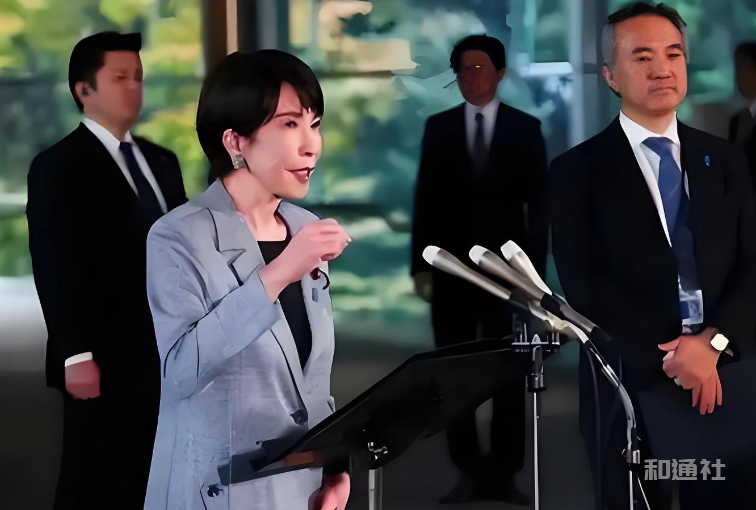


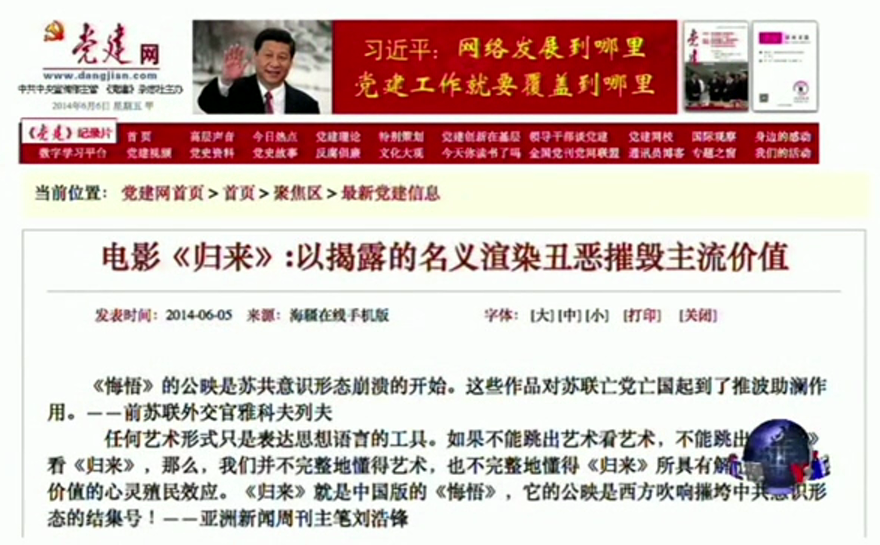

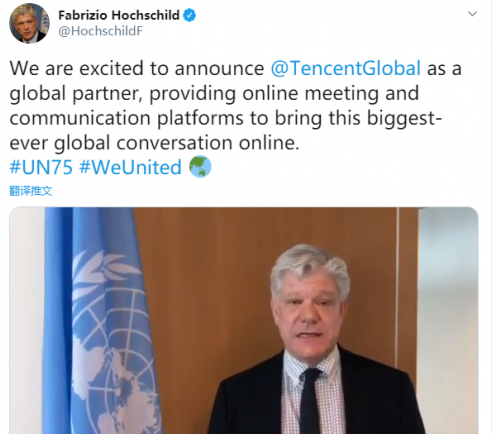
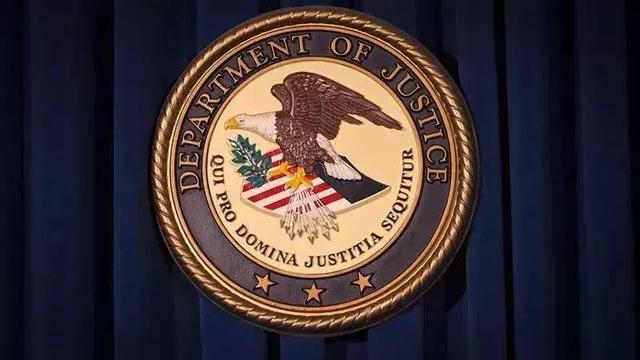


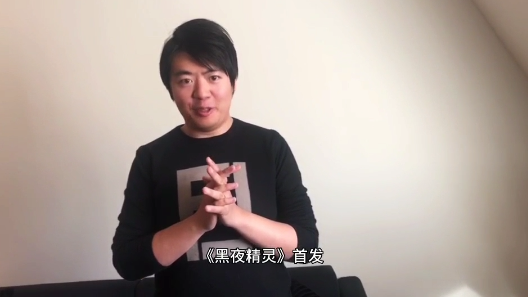

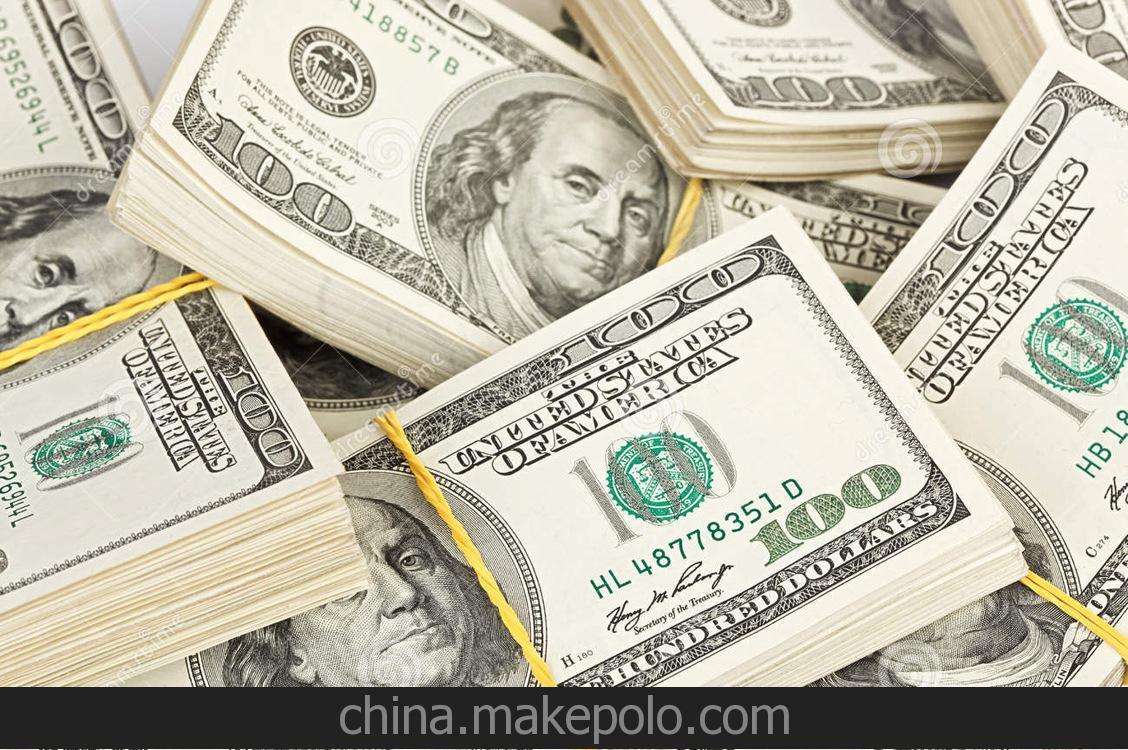
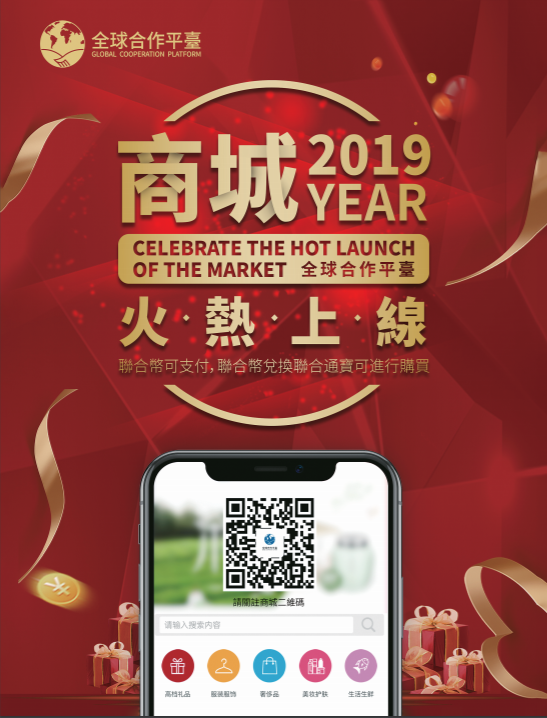
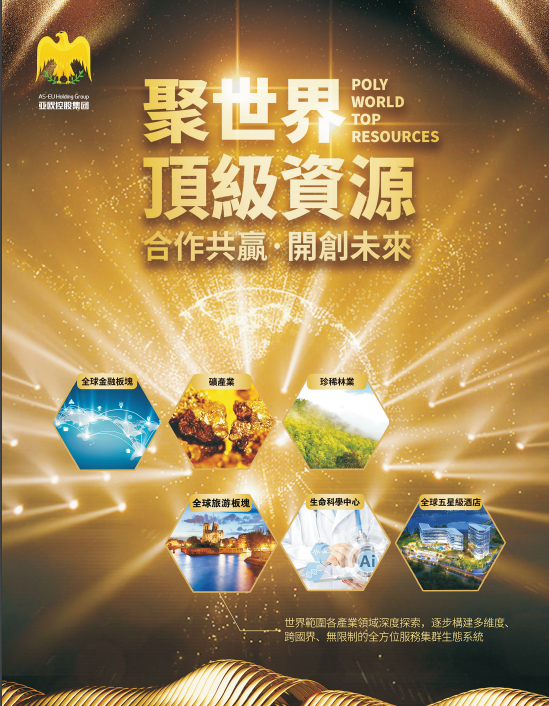
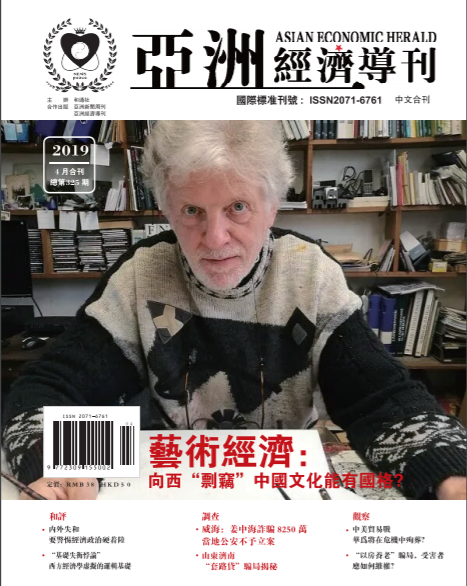

评论区
暂无评论,快来抢沙发~